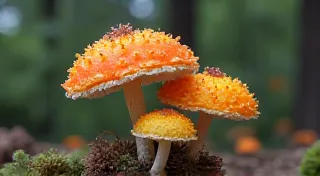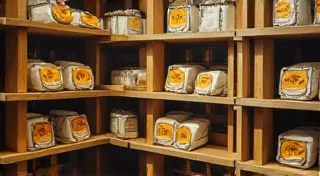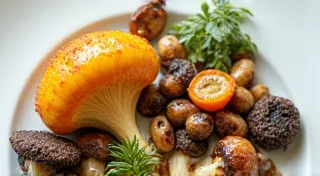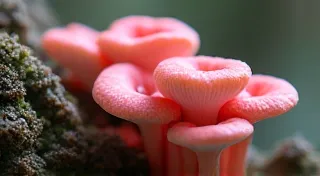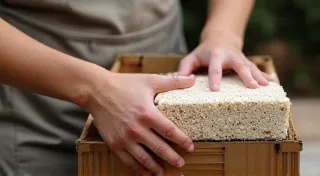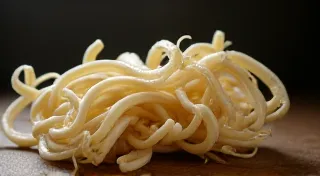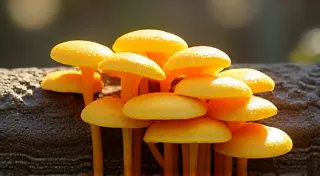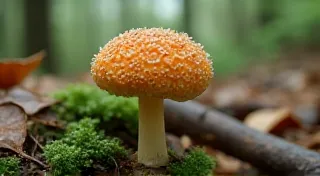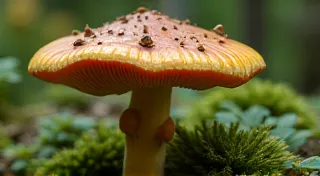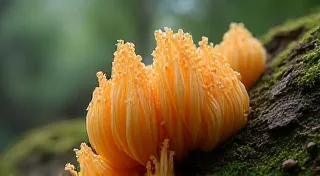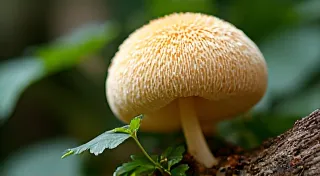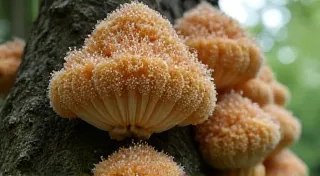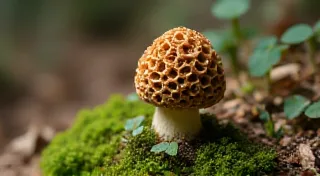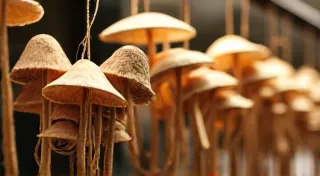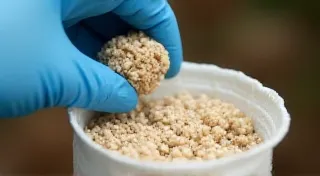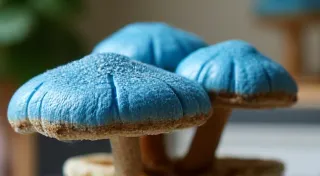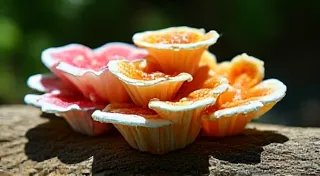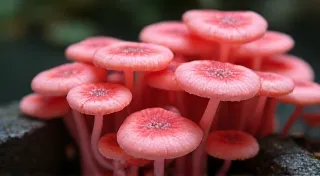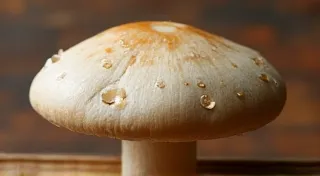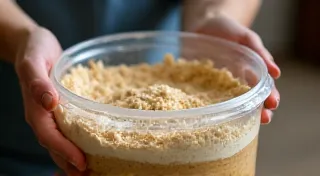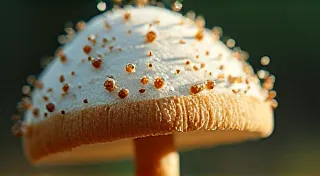Growing Uncommon Mushrooms at Home: A Comprehensive Guide to Exotic Varieties
Embark on a fascinating journey into the realm of mushroom growing! This comprehensive guide unlocks the secrets to cultivating uncommon and gourmet mushrooms in your own home. Whether you're a seasoned gardener or a complete beginner, we offer everything you need for successful home cultivation, blending practical techniques with the wonder of mycology. Prepare to be amazed by the diversity of exotic mushrooms and the rewarding experience of harvesting your own delicious, flavorful fungi. This guide covers everything from basic principles to advanced techniques, troubleshooting common issues, and appreciating the profound ecological and philosophical implications of fungal cultivation.
Why Grow Uncommon Mushrooms at Home? Beyond the Button Mushroom
For centuries, mushrooms have captivated humanity, not just for their culinary delight, but also for their symbolic power and profound connection to the natural world. While button mushrooms and portobellos are readily available in supermarkets, the world of fungi offers a stunning array of flavors, textures, and appearances far beyond the commonplace. Growing your own exotic mushrooms allows you to explore this incredible biodiversity and elevate your culinary adventures to new heights. Imagine the satisfaction of presenting a Lion’s Mane mushroom – resembling a beautiful, fluffy brain – to your guests, or the delicate, fruity aroma of Pink Oyster mushrooms gracing your dinner table.
Beyond the gastronomic rewards, mushroom growing offers a unique and surprisingly accessible entry point into the fascinating science of mycology. You’re not just growing food; you’re nurturing a complex ecosystem, observing the incredible power of mycelial bloom, and gaining a deeper understanding of the interconnectedness of life. It’s a chance to connect with nature in a tangible way, to appreciate the hidden wonders that exist beneath our feet, and to contribute to a more sustainable food system.
Getting Started: From Beginner to Mycologist – The Fundamentals of Mushroom Cultivation
The path to successful mushroom growing can seem daunting at first, but it’s far more approachable than you might think. This guide is designed to take you from absolute beginner to a confident cultivator, offering resources for all levels of experience. For those just starting out, a simple DIY mushroom grow kit provides a fantastic introduction to the process. These kits take the guesswork out of substrate preparation and inoculation, allowing you to witness the magic of fungal growth firsthand. Look for kits featuring varieties like Oyster mushrooms or Shiitake, as these are generally more forgiving for beginners.
Once you’re comfortable with the basics, you can explore more advanced techniques and delve into the intricacies of different species. Understanding mushroom spores is key to appreciating the cycle of life – how microscopic spores transform into vibrant, fruiting bodies. Spores are essentially the ‘seeds’ of fungi, and they’ve been scattered far and wide by wind, water, and animals. Learning to properly prepare substrate preparation is also critical. This involves choosing the right materials – often a combination of sawdust, straw, wood chips, or coffee grounds – and creating an environment conducive to mycelial growth. Different mushroom species have different substrate preferences, so research is essential.
Key Substrate Components & Considerations:
- Carbon Source: Provides energy for mycelial growth (e.g., sawdust, straw, coffee grounds).
- Nitrogen Source: Supports protein synthesis (e.g., bran, soybean meal).
- Water Content: Crucial for hydration and enzymatic activity (typically around 60-70%).
- pH Level: Most mushrooms thrive in a slightly acidic environment (pH 5.5-6.5).
- Sterilization/Pasteurization: Essential to eliminate competing microorganisms.
Exploring a World of Flavor: Spotlight on Exotic Varieties and Their Unique Cultivation Needs
The possibilities are endless when it comes to mushroom growing! Let’s take a closer look at some of the most captivating and rewarding exotic mushrooms you can cultivate at home:
- Golden Oyster Mushrooms (Pleurotus citrinopileatus): With their vibrant golden color and delicate, fruity flavor, Golden Oyster mushrooms are a delightful addition to any meal. They’re relatively easy to grow and thrive on a wide range of substrates, including straw, sawdust, and coffee grounds. Our Golden Oyster Mushroom Cultivation Guide provides detailed instructions for successful cultivation.
- Pink Oyster Mushrooms (Pleurotus djamor): Add a pop of color and a subtle, fruity flavor to your culinary creations with Pink Oyster mushrooms. They are known for their ease of cultivation, but prefer a slightly higher humidity than other oyster varieties. The Pink Oyster Mushroom Cultivation Guide is your gateway to cultivating these beauties.
- Lion’s Mane Mushroom (Hericium erinaceus): Known for its unique appearance and cognitive-enhancing properties (studies suggest potential benefits for brain health), Lion’s Mane is a highly sought-after mushroom. They typically require hardwood substrates like oak or beech. Whether you’re a beginner or experienced cultivator, the Lion's Mane Mushroom Growing Guide has you covered.
- King Trumpet Mushrooms (Pleurotus astrolabiformis): These majestic mushrooms boast a rich, meaty flavor and impressive size. They grow best on hardwood substrates and require a longer incubation period. Our King Trumpet Mushroom Cultivation Guide will equip you with the knowledge to achieve a regal harvest.
- Maitake Mushrooms (Grifola frondosa) (Hen of the Woods): With their ruffled appearance and earthy flavor, Maitake mushrooms are a true delicacy. They are often found growing at the base of oak trees in the wild. Both our Growing Morel Mushrooms at Home and Growing Morel Mushrooms pages delve into the complexities of this fascinating species, outlining techniques and offering guidance for aspiring mycologists.
- Enoki Mushrooms (Flammulina velutipes): Known for their long, delicate stems and mild flavor, Enoki mushrooms are commonly used in Asian cuisine. They thrive in cooler temperatures and require a relatively high humidity level. The Enoki Mushroom Cultivation Guide will teach you how to grow these delicate and delightful mushrooms.
Creating the Ideal Environment: Grow Rooms & Beyond - Environmental Control for Optimal Growth
While some mushrooms can be grown outdoors, a dedicated mushroom grow room offers greater control over environmental factors, leading to more consistent and abundant harvests. The Creating a Mushroom Grow Room: Environmental Control page explores ventilation, humidity, temperature, and lighting – the key elements for success. Proper mushroom inoculation is also essential for transferring the fungal culture to the substrate. Maintaining sterility throughout the inoculation process is paramount to prevent contamination.
Key Environmental Factors:
- Temperature: Varies depending on the species (typically between 60-80°F).
- Humidity: High humidity (80-95%) is crucial for fruiting.
- Light: Indirect light is generally sufficient for fruiting.
- Ventilation: Provides fresh air and removes excess carbon dioxide.
Troubleshooting Common Issues: Identifying and Addressing Challenges in Mushroom Cultivation
Even with the best techniques, challenges can arise. Common issues include contamination, slow growth, and lack of fruiting. Careful observation and prompt action are key to resolving these problems.
- Contamination: Green, black, or fuzzy molds indicate contamination. Discard the affected substrate.
- Slow Growth: Check substrate moisture, temperature, and ventilation.
- Lack of Fruiting: Ensure adequate humidity, light, and fresh air.
The Ecological and Philosophical Implications of Mushroom Cultivation
Beyond the immediate gratification of harvesting delicious mushrooms, cultivating these incredible organisms offers a deeper appreciation for the fungal kingdom and its vital role in our planet's ecosystems. Fungi are the unsung heroes of decomposition, breaking down organic matter and recycling nutrients. They form symbiotic relationships with plants, assisting in nutrient uptake and disease resistance. By engaging in mushroom cultivation, we connect with these processes, fostering a more mindful and sustainable relationship with nature.
Conclusion: Embark on Your Fungal Journey
Growing uncommon mushrooms at home is a rewarding and fascinating endeavor. It's a journey of discovery, connecting you with the wonders of the natural world and providing you with a delicious and sustainable food source. With patience, dedication, and a willingness to learn, you can cultivate a thriving fungal kingdom in your own home. Happy growing!
